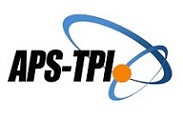Desain Pembelajaran Proyek Kolaborasi Menggunakan Model SECI untuk Bidang Studi IPS
Abstract
The development of collaborative project learning designs using the SECI model is carried out to produce learning designs that are practical, attractive, and valid. Development is carried out to overcome problems in project-based learning, namely problem formulation, group management difficulties, and challenges in developing ideas. The research uses the Dick and Carey model. The instructional model uses a project-based learning model integrated with the SECI model. The SECI model transfers knowledge consisting of socialization, externalization, combination, and internalization. Developing this instructional design produces a syntax that will become the basis for implementing learning. Instructional design expert and material expert do formative evaluations related to product validation. External parties also performed trials as part of a formative evaluation. Trials on students and trials on the implementation of learning designs were carried out to test the practicality and attractiveness of learning designs. In the learning design tested on students, students showed good participation in each syntax stage to achieve learning objectives. Students also write learning reflections which state that learning designs enable them to develop ideas and practice collaboration skills. The results of development showed that the instructional design is valid, practical, and attractive, making it feasible to use in learning.
Abstrak
Pengembangan desain pembelajaran proyek kolaborasi dengan model SECI dilakukan untuk menghasilkan desain pembelajaran yang praktis, menarik, dan valid. Pengembangan dilakukan untuk mengatasi masalah dalam pembelajaran berbasis proyek yaitu kesulitan perumusan masalah, kesulitan pengaturan kelompok, dan tantangan dalam pengembangan ide. Pengembangan desain pembelajaran ini menggunakan model Dick and Carey. Model pembelajaran menggunakan model pembelajaran berbasis proyek yang diintegrasikan dengan model SECI. Model SECI merupakan model untuk mentransfer pengetahuan yang terdiri dari socialization, externalization, combination, dan internalization. Pengembangan desain pembelajaran ini menghasilkan sintaks pembelajaran yang akan menjadi dasar pelaksanaan pembelajaran. Evaluasi formatif terkait validasi produk dilakukan oleh ahli desain pembelajaran dan ahli materi. Uji coba implementasi desain pembelajaran juga dilakukan pihak eksternal sebagai bagian dari evaluasi formatif. Uji coba kepada siswa dan uji coba implementasi desain pembelajaran dilakukan untuk menguji kepraktisan dan kemenarikan desain pembelajaran. Dalam desain pembelajaran yang diuji kepada siswa, siswa menunjukkan partisipasi dalam tiap tahapan sintaks dengan baik sehingga tujuan pembelajaran dapat tercapai. Siswa juga menuliskan refleksi pembelajaran yang menyatakan bahwa desain pembelajaran memampukan untuk mengembangkan ide dan melatih keterampilan kolaborasi. Hasil validasi dan uji coba yang dilakukan menunjukkan bahwa desain pembelajaran yang dikembangkan valid, praktis, dan menarik sehingga layak untuk digunakan dalam pembelajaran.
Keywords
Full Text:
PDFReferences
Al Rasyid, M., & Khoirunnisa, F. (2021). The Effect Of Project-Based Learning On Collaboration Skills Of High School Students. Jurnal Pendidikan Sains, 9(1), 113–119.
Anshari, M., & Hamdan, M. (2022). Understanding knowledge management and upskilling in Fourth Industrial Revolution : transformational shift and SECI model. Vine Journal of Information and Knowledge Managemen Systems, 373–393. https://doi.org/10.1108/VJIKMS-09-2021-0203
Anwar, A., Amir, Z., & Sari, I. K. (2020). Pengaruh Project Based Learning Terhadap Motivasi Belajar Sekolah Dasar Negeri 167 Pekanbaru. JMIE (Journal of Madrasah Ibtidaiyah Education), 4(1), 127–142. https://doi.org/10.32934/jmie.v4i1.175
Astuti, R. I. P., Toenlioe, A. J. E., & Husna, A. (2018). Persepsi Mahasiswa Teknologi Pendidikan Angkatan 2016 Terhadap Penerapan Model Pembelajaran Berbasis Proyek pada Mata Kuliah Fotografi. Jurnal Kajian Teknologi …, 1(1). http://journal2.um.ac.id/index.php/jktp/article/view/3385
Baser, D., Ozden, M. Y., & Karaarslan, H. (2017). Collaborative project-based learning: An integrative science and technological education project. Research in Science & …. https://doi.org/10.1080/02635143.2016.1274723
Belwal, R., Belwal, S., Sufian, A. B., & Badi, A. Al. (2020). Project-based learning (PBL): outcomes of students’ engagement in an external consultancy project in Oman. Education+ Training. https://doi.org/10.1108/ET-01-2020-0006
Chan, I., Lau, Y., Sze, W., Lee, W., & Business, D. (2020). Adoption of Knowledge Creation Model in Team-based Project to Support Student Engagement. International Journal of Innovation, Creativity and Change, 14(11), 1–15.
Chatti, M. A., Klamma, R., Jarke, M., & Naeve, A. (2007). The Web 2 . 0 Driven SECI Model Based Learning Process. Seventh IEEE International Conference on Advanced Learning Technologies (ICALT 2007), 5(Icalt), 5–7.
Chen, H., & Yang, J. (2021). Application of IT-Integrated Project-Based Learning in the Teaching Reform of Undergraduate Education. … Journal of Emerging Technologies in Learning …. https://www.learntechlib.org/p/220080/
Chootongchai, S., & Songkram, N. (2018). Design and Development of SECI and Moodle Online Learning Systems to Enhance Thinking and Innovation Skills for Higher Education Learners. International Journal of Engineering and Technology, 13(3), 154–172. https://doi.org/https://doi.org/10.3991/ijet.v13i03.7991
Cintang, N., Setyowati, D. L., & ... (2018). The Obstacles and Strategy of Project Based Learning Implementation in Elementary School. … and Learning …. https://pdfs.semanticscholar.org/a35d/00e956443841022bc3f36f1fe4ba09eabe1b.pdf
Dick, W., Carey, L., & Carey, J. O. (2015). The Systematic Design of Instruction. Vital Source (for Pearson) VST E+p. https://books.google.co.id/books?id=XIjNjgEACAAJ
Emami, C., Najafipour, M., & Dehghan, S. (2013). The effect of the using the brainstorming method on the academic achievement of students in grade five in Tehran elementary schools. Procedia - Social and Behavioral Sciences, 83, 230–233. https://doi.org/10.1016/j.sbspro.2013.06.045
Farnese, M. L., Barbieri, B., Chirumbolo, A., & Patriotta, G. (2019). Managing Knowledge in Organizations : A Nonaka ’ s SECI Model Operationalization. Frontiers in Psychology, 10(December), 1–15. https://doi.org/10.3389/fpsyg.2019.02730
Gagne, R. M., Briggs, L. J., & Wager, W. W. (1992). Principles of Instructional Design (4th Editio). Harcourt Brace College Publishers.
Hemilia, F., Wedi, A., & Praherdiono, H. (2022). Pengembangan Modul Digital Menggunakan Pendekatan Collaborative Learning pada Mata Kuliah Pengembangan Bahan Belajar. 5(3), 223–231. https://doi.org/10.17977/um038v5i32022p223
Herschel, R. T., Nemati, H., & Steiger, D. (2001). Tacit to explicit knowledge conversion : knowledge exchange protocols. Journal of Knowledge …, 5(1), 107–116.
Hislop, D., Bosua, R., & Helms, R. (2009). Knowledge Management in Organizations: A Critical Introduction. Oxford University Press.
Kristiani, D., Ilmu, F., & Universitas, K. (2018). JITU : Journal Informatic Technology And Communication JITU : Journal Informatic Technology And Communication. 2(2), 22–27.
Kusumastuti, D., Pramuditya, R., Kurniawati, A., & Teguh, M. (2020). E-learning Content Design using ADDIE and SECI : Case of Shelving Activity in E-learning Content Design using ADDIE and SECI : Case of Shelving Activity in Research Organization. International Journal on Advanced Science Engineering Information Technology, 10(July). https://doi.org/10.18517/ijaseit.10.3.10841
Kuswandi, D., Surahman, E., Thaariq, Z. Z. A., & ... (2018). K-Means clustering of student perceptions on project-based learning model application. … on Education and …. https://ieeexplore.ieee.org/abstract/document/8693932/
Liikamaa, K., & Aramo-immonen, H. (2017). CUMULATION OF COLLECTIVE TACIT KNOWLEDGE IN HIGHER EDUCATION. International Conference on Education and New Learning Technologies, July, 3298–3303. https://doi.org/10.21125/edulearn.2017.1705
Marza, A., Adnan, F., Fitria, Y., & Montesori, M. (2019). Pengaruh Model Project Based Learning (Pjbl) Terhadap Kemampuan Berpikir Kritis Dan Kerjasama Siswa Pada Pembelajaran Tematik Terpadu Kelas IV SD. Jurnal Basicedu. http://jbasic.org/index.php/basicedu/article/view/27
Meita, L., Furi, I., Handayani, S., & Maharani, S. (2018). Eksperimen model pembelajaran project based learning dan project based learning terintegrasi stem untuk meningkatkan hasil belajar dan kreativitas siswa. Jurnal Penelitian Pendidikan, 35(1). https://doi.org/https://doi.org/10.15294/jpp.v35i1
Nafi’a, M. Z. I., Kuswandi, D., & Wedi, A. (2023). Pengembangan Desain Pembelajaran Multiliterasi Berbasis Tringo pada Pembelajaran Menulis Teks Eksposisi Siswa SMA. JKTP: Jurnal Kajian Teknologi Pendidikan, 5(4), 349–358. https://doi.org/10.17977/um038v5i42022p349
Nonaka, I., & Takeuchi, H. (1995). The Knowledge-creating Company:How Japanese Companies Create the Dynamics of Innovation. Oxford University Press.
Nurcahyo, R., & Sensuse, D. I. (2019). Knowledge management system dengan seci model sebagai media knowledge sharing pada proses pengembangan perangkat lunak. Jurnal Teknologi Terpadu, 5(2), 63–76.
Pribadi, B. A. (2016). Desain dan Pengembangan Program Pelatihan Berbasis Kompetensi Implementasi Model ADDIE. Kencana. https://books.google.co.id/books?id=m%5C_pDDwAAQBAJ
Rahmat, K., Pernanda, S., Hasanah, M., Muzaki, A., Nurmalasari, E., Rusdi, L., Islam, U., Sunan, N., Dasar, S., Terpadu, I., Hati, B., Utara, P., Padang, U. N., Mada, U. G., Yogyakarta, U. N., Tinggi, S., & Tarbiyah, I. (2021). Model pembelajaran discovery learning guna membentuk sikap peduli lingkungan pada siswa sekolah dasar : sebuah kerangka konseptual. Adiwidya Jurnal Pendidikan Dasar, 6, 109–117.
Robertson, B., Eng, B., Eng, P., Daniel, B., & Ph, D. (2008). A Software-Based Lessons Learned Management System : Enhancing Knowledge Management in Organizations Department of Industrial Engineering. Proceedings of the 2008 Industrial Engineering Research Conference, 2008.
Sanzogni, L., Guzman, G., & Busch, P. (2017). Artificial intelligence and knowledge management : questioning the tacit dimension. Prometheus, 9028(September), 1–20. https://doi.org/10.1080/08109028.2017.1364547
Setyosari, P. (2015). Metode Penelitian Pendidikan dan Pengembangan. Jakarta: Kencana.
Sugiyono. (2015). Metode Penelitian & Pengembangan (Research and Development). Bandung: Alfabeta.
Tee, M. Y., & Lee, S. S. (2011). From socialisation to internalisation : Cultivating technological pedagogical content knowledge through problem-based learning Cultivating TPACK through problem solving approaches. Australasian Journal of Educational Technology, 27(1), 89–104.
Usmeldi, U. (2018). The effect of project-based learning and creativity on the students’ competence at vocational high schools. Proceeding of The 5th UPI International Conference …. https://www.atlantis-press.com/article/55913890.pdf
Wiek, A., Xiong, A., Brundiers, K., & ... (2014). Integrating problem-and project-based learning into sustainability programs: A case study on the School of Sustainability at Arizona State University. International Journal of …. https://doi.org/10.1108/IJSHE-02-2013-0013
Xie, Y., Ke, F., & Sharma, P. (2008). The effect of peer feedback for blogging on college students ’ reflective learning processes. Internet and Higher Education, 11, 18–25. https://doi.org/10.1016/j.iheduc.2007.11.001
DOI: http://dx.doi.org/10.17977/um038v6i12023p037
Refbacks
- There are currently no refbacks.
Copyright (c) 2023 Karunia Tiara Vani, Saida Ulfa, Dedi Kuswandi

This work is licensed under a Creative Commons Attribution-ShareAlike 4.0 International License.
JKTP: Jurnal Kajian Teknologi Pendidikan published by Department of Educational Technology, Faculty of Education, State University of Malang in Collaboration with Asosiasi Program Studi Teknologi Pendidikan Indonesia (APS TPI).
Publisher Address:
Lab. Teknologi Pendidikan, Gd.E2, Lt.1
Fakultas Ilmu Pendidikan Universitas Negeri Malang
Jl. Semarang 5, Kota Malang Email: jktp.fip@um.ac.id
========================================================================================================
| INDEXED BY | TOOLS | PLAGIARISM CHECK | ARTICLE TEMPLATE |
|
|

JKTP: Jurnal Kajian Teknologi Pendidikan is licensed under a Creative Commons Attribution-ShareAlike 4.0 International License.
JKTP Statistics (Since July 13th, 2020)






.png)












